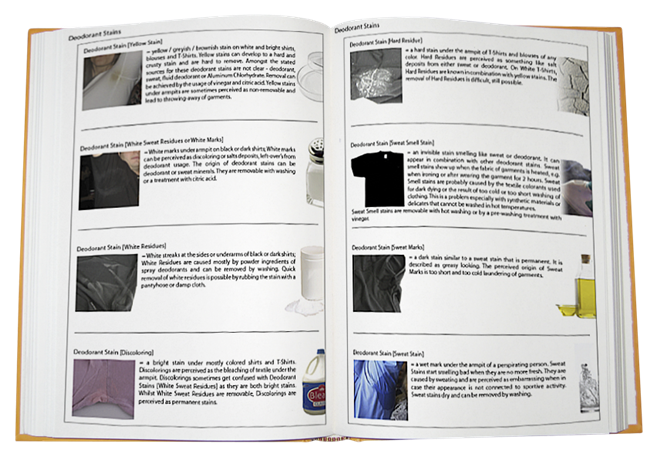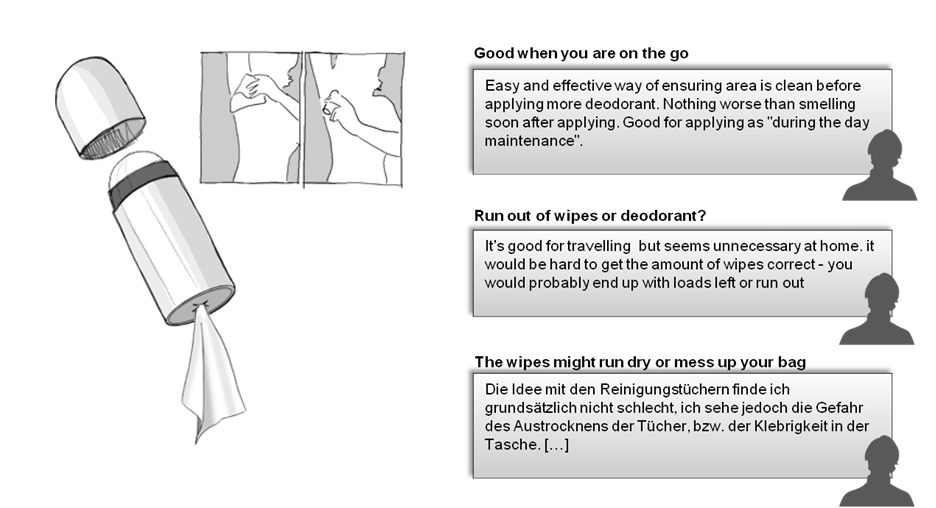Authors: Bilgram, V., Bartl M., Biel, S. published in Marketing Review St. Gallen, 1/2011.
Co-creation has become a prevalent approach taken by innovation leaders to excel in innovation management and complement internal R&D activities. In this article the authors will introduce the co-creation process at Nivea and describe how Nivea co-developed a new deodorant with consumers. The focus will be on two different co-creation tools – the netnography method geared to gain consumer insights from social media and an online co-creation session to evaluate and further enrich ideas.
The world is our lab
Traditionally, companies with superior R&D centers had been technology-driven innovation leaders with a long-term competitive advantage arising from ongoing proprietary R&D activities. “Picking a man of genius, giving him money, and leaving him alone” (Conant 2002) had long been the managerial maxim in the heyday of internal R&D excellence, which is epitomized by institutions such as AT&T’s Bell Labs or Xerox’s Palo Alto Research Center (Chesbrough et al. 2006). Initiated by MIT Professor Eric von Hippel’s work on the active role of users in new product development and on the ‘sources of innovation’ outside a company’s walls (von Hippel 1988), innovation management was ushered in a new era. It was found that innovations not only originated from the manufacturers’ domain but also to a large extent from users (von Hippel 2005). Since the turn of the millennium many companies such as 3M (von Hippel et al. 1999), Xerox (Chesbrough et al. 2006), BMW (Bartl et al. 2010) or Procter&Gamble (Huston/Sakkab 2006) have undergone a radical change in their innovation strategies by opening up their innovation processes to external stakeholders. Companies finally had to acknowledge that powerful resources, knowledge, creativity and experience are widely distributed and that even the most sophisticated R&D organizations have to tap external sources of innovation. In 2000 former P&G CEO A.G. Lafley set forth the goal to acquire 50% of the company’s innovations outside the company – up from 15% in 2000, 35% of P&G’s new products stemmed from outside the company in 2005 (Huston/Sakkab 2006).
Co-creation powered by Social Media
Today, companies and consumers jointly create value at multiple points of interaction which has become generally known as co-creation (Prahalad/Ramaswamy 2000; Füller 2010). In contrast to open innovation which is “the use of purposive inflows and outflows of knowledge to accelerate internal innovation” (Chesbrough et al. 2006, 1), co-creation is an outside-in approach focusing users and end consumers in particular. It can be defined as an “active, creative and social process, based on collaboration between producers and users, that is initiated by the firm to generate value for customers” (Roser et al. 2009). Co-creation has mutated from a niche phenomenon to a prevalent approach of collaborative innovation taken by innovation leaders such as P&G, BMW, Siemens, Nokia or Beiersdorf. With the advent of the internet and with web 2.0 applications reaching critical mass, a proliferation of ‘outside-in’ innovation concepts and models emerged tremendously easing the way for companies to engage and collaborate with users. Approaches such as crowdsourcing (Howe 2006), mass customization (Franke et al. 2010), collaborative innovation (Sawhney et al. 2005; Prandelli et al. 2006) netnography (Kozinets 2002), virtual customer integration (Dahan and Hauser 2002; Bilgram et al. 2009), community based innovation (Füller et al. 2006), user innovation (von Hippel 1988, 2005), open innovation (Chesbrough et al. 2006) or co-creation (Prahalad/Ramaswamy 2000; Füller 2010) have been developed to explain and utilize the phenomenon of external stakeholders being involved at various stages of the innovation process as co-creators. A co-creation process consists of alternating outbound and inbound exchanges of information to connect internal innovation activities and the input of users. By that means internal technological know-how can be merged with external knowledge and creativity. These sequences of inbound flows of creativity and knowledge from users and outbound flows of information from inside the company may be considered a co-creative ‘ping-pong game’.
Methods & Tools for Co-creation
There is a whole landscape of methods available to companies for collaborative innovation with users. Most developments and advancements of these techniques are driven by using the web as a vast library of dialogue on products and brands (Kozinets 2002) as well as a network to identify and connect creative minds (Sawhney et al. 2005). In the following the authors introduce two co-creation techniques which were applied consecutively in the case of Nivea leading to the new Black & White deodorant.
Netnography
Netnography, a linguistic blend of ‘interNET’ and ‘ethNOGRAPHY’, is a qualitative empathic research methodology utilizing adapted ethnographic research techniques to enable researchers to deeply immerse in online consumer conversations (Kozinets 2002; Bartl et al. 2009). Largely on account of the emergence of the social media phenomenon and user-generated content, the internet has become a place where thousands of highly involved consumers exchange personal experiences, concerns and opinions on a huge variety of products and brands as well as on product usage. Besides, users go even further and discuss possible solutions for product-related issues, modify existing products or even develop innovative products themselves. Due to the passive and unobtrusive observation of online communities, forums and other social media content companies are able to gain unbiased consumer insights. Instead of directly asking and thus inevitably biasing the consumer’s response the netnography approach aims to understand the emotional, social and cultural context of consumers’ product experiences in a merely observant fashion. As opposed to more quantitative web monitoring approaches, listening to consumers rather than asking them, understanding rather than measuring consumers’ attitudes and behaviors, are core principles of netnography. One of the greatest challenges for researchers conducting netnographies is to identify ‘diamonds in the rough’ – the most relevant and inspiring insights in the abundance of user statements online. For that reason a systematic software-aided five-step process was conceived as illustrated in figure 1 (Bartl et al. 2009).

Figure 1: The NetnographyInsights© Process
Online Co-Creation
Online co-creation studies or communities offer an inspiring and compelling environment for users enabling them to generate, enrich and evaluate ideas or concepts (Füller 2010; Nambisan/Nambisan 2008). Within that online setting qualitative and quantitative research techniques and tools are combined to obtain both creative input and market research data. Various co-creation modules such as configuration tools or drag&drop features constitute a playful experience resulting in a high engagement of users. For example, interactive online toolkits allow users to compose a product concept along certain feature dimensions receiving instant feedback on their actions and decisions. Coupled with research in the backend of the application users’ preferences and needs can be observed and multiple attributes can be jointly measured. Online co-creation can be either conducted on an individual basis, i.e. each user is integrated separately, or in a networked and collaborative structure of a community adding a social dimension and allowing users to connect and communicate with one another. Integrated communication features such as online discussion forums allow for rich interaction on a user-to-user as well as on a user-to-company level and may be either moderated or free-flowing.
Co-creating the new black&white deodorant
Nivea is the best-known brand of the multinational skin care corporation Beiersdorf based in Hamburg, Germany. The company is a worldwide research and development leader in the area of skin care. Innovation efforts at Nivea have long been predominantly technology-driven harnessing superior internal R&D capabilities. Even though open innovation is not a new concept to Nivea consumers had not been incorporated as co-creation partners in open innovation activities until recently. In the last few years Nivea has recognized consumers as valuable sources of innovation (Bartl et al. 2009). In order to integrate the consumers’ voice beyond traditional market research techniques like concept tests or focus groups, the Nivea Deodorant and Antiperspirant Division instituted a holistic co-creation approach with users in the fuzzy front end of innovation. In this paper the authors focus on two projects to show how Nivea embraced consumers to develop a new deodorant: (1) the analysis of online communities and social media via the netnography method and (2) an online co-creation study for the enrichment and selection of ideas.
Netnography – Listening to Consumers
In the case of the Nivea’s Black & White deodorant co-creation aimed to start new product development from scratch at the very beginning of the innovation process. Due to Nivea’s innovation strategy and roadmap deodorant and antiperspirant staining was a high-priority topic within R&D which was to be further explored from a consumer standpoint. The netnography was used as an entry project into the co-creation process helping R&D to immerse and orientate itself in the consumers’ world. The goal was to draw a landscape of needs, wishes, concerns, consumer language and potential product solutions by users, which are explicitly and implicitly expressed in online communities and social media. In the following the authors will outline the netnography process and results of the method (see figure 1).
A team of researchers and designers started the netnography on ‘Deodorant and Antiperspirant Staining’ with a creative session to uncover potential search fields, topics and analogue markets. Additionally, an initial set of keywords and phrases was conceived which was continuously developed and refined in the course of the subsequent identification and selection of social media sources. Starting out with a broad search, more than 200 social media sites in three languages were screened covering all kinds of online ‘consumer tribes’. In addition to general search engines and specific search tools designed to explore social media and user-generated content the search also utilized an extensive internal database containing communities, forums, blogs, advice portals, UGC platforms, question & answer sites and social networks. Apart from social media sites on cosmetics, health, beauty, lifestyle, fashion, sports and do-it-yourself, relevant consumer statements were also identified in conversations revolving around bodybuilding or wedding preparations, in which users have extreme needs and take enormous efforts when they prepare themselves for a competition or the day of their wedding. Applying qualitative as well as quantitative selection criteria, e.g. the size and activity of communities or the quality of the conversations, the most relevant and insightful communities were observed and analyzed in-depth.
In a next step threads of consumer conversations were retrieved from the social media sites and observed. Using software for qualitative data analysis the content was then systematically analyzed and clustered in different topics. A selection of topics identified during the observation is adduced in the following.
Topic 1: Types of Stains
The consumers’ perception and description of different types of stains was one of several topics discussed online. The consumer dialogue revealed that users speak about a number of very different stains. Among others, users differentiated between yellow stains, white marks, discolorations, hard residues, sweat smell residues and sweat stains. Although consumers have a distinct classification of stains, they are using their own language resulting in an inconsistent wording. From the stain classification in the user conversations a ‘stain manual’ was derived aligning the users’ wording with the technical terminology used in Nivea’s R&D unit. The ‘stain manual’ was enriched by user-generated content such as pictures of the respective stains and tutorials (see figure 2).

Figure 2: Consumer Insight – “Stain Manual”
Topic 2: Causes of Staining
“If the stain is yellow or green in color and has a crunchy or crispy texture, it’s due to perspiration. If the stain, however, is white or clear with a greasy texture, it’s due to the antiperspirant and should be treated as a grease stain with the appropriate solvent”. This statement is just one of many user quotes clustered in a second topic. They show how consumers try to identify the sources of different deodorant stains in a ‘jungle of causes and effects’. It was found that consumers are not fully aware of the complexity and interactions of multiple drivers such as sweat, deodorant ingredients, laundry detergent or textiles. Usually consumers identify a single source or the interaction of a maximum of two factors which, in their opinion, account for the deodorant staining. Due to the general confusion regarding the causes and effects of stains, myths about the origin for deodorant stains are prevalent. Some consumers ascribe deodorant stains to nutrition, nicotine consumption, the laundry dryer or the hormone level from menopause or pregnancy.
Topic 3: Stain Removal
The discussion on stains is inseparably connected to the discussion on how to remove them from clothes or on how to prevent stains. Users undergo extensive ‘trial-and-error’ to find the right cures and report their experiences online. In order to fight deodorant stains users, for instance, resort to citric acid, lemon juice, white vinegar, salt, bicarbonate, bleach and self-made remedies but also divert substances from their intended use. Preventive measures range from wearing undershirts or wiping the armpit with alcohol (see figure 3) to the ‘armpit care strategy’. This strategy is related to the consumers’ assumption that deodorant stains are caused by deodorant that was still liquid when clothes were put on. Users talk about preventing stains by letting the deodorant fully dry before putting on clothes. Users describe that they just wait a few minutes, that they wear a different ‘dirt shirt’ first and then change before leaving the house or that they blow-dry their armpits after applying deodorant.
Certain needs, concerns or suggestions for product improvements repeatedly occurred in consumers’ online conversations or bore cogent anecdotal evidence and thus proved to be relevant. The ‘gold nuggets’ within the content analysis, i.e. fresh, inspiring and enduring findings, were then aggregated to consumer insights.
In the final step of the netnography product designers joined the research team and helped to interpret and translate the consumer insights into initial product ideas which form the basis for subsequent discussion, testing and design phases. The consumer insights and initial product solutions helped Nivea to develop a deep understanding of consumers, the language they use and of what truly bothers them.

Figure 3: Consumer Quotes on Preventing Stains by Thorough Disinfection Prior to Application
Online Co-Creation – Interacting with Consumers
Following up the netnography as well as various ideation and co-creation sessions with external stakeholders, an online co-creation study was conducted. The previous netnography helped to get a profound understanding of the users’ needs and values as a result of the context-rich qualitative analysis. In order to test the hypotheses and ideas derived from listening to the consumers’ conversations a quantitative online co-creation study was carried out with a carefully selected sample of consumers. The goal of the online co-creation study was to enrich and evaluate existing ideas incorporating the consumers’ voice and eventually ease the selection of the best ideas.
In a first step the ideas were visualized to ensure a common understanding of the concepts and to make the study more vivid. The research design was developed also taking into account the consumer insights gained in the netnography, hence, allowing the researchers to ask the right questions about the product ideas in the users’ language. For instance, the research team could address staining issues in the users’ language by aligning corporate and user wording.
Consumers were introduced to the deodorant ideas in the form of verbal concepts and visualizations. Having explored the concepts consumers evaluated the ideas. Drag&drop tools were designed to realize methodological advantages and to offer a compelling co-creation experience. “The survey has got some awesome drag and drop capability that I’ve never seen in a survey/study ever before – got to hand it to German engineering, huh?” the Undershirt Guy stated and promoted the study in his network (http://www.undershirtguy.com/2009/07/31/wanna-participate-in-the-coolest-deodorant-innovation-study-in-the-world). TUG, as he calls himself, is a leading-edge user in the field of undershirts and deodorants who was identified in the course of the netnography.
Apart from the evaluation of the ideas users were also given the opportunity to enrich and improve the ideas, raise questions or concerns and name potential fields of applications (see figure 4). In more than 500 comments per idea users approved the ideas, described potential fields of application or mentioned additions to the original idea. Finally, users were asked to take on the role of a developer and gate-keeper having to decide which ideas to further develop and which to drop. The massive input from consumers was systematically analyzed and structured. In the final evaluation of all ideas the idea leading to the new Black & White deodorant was ranked third by the consumers supporting the relevance of the concept.
The consumer feedback acquired via the netnography and in the co-creation study was assimilated in two workshops right after each project. Applying the netnography method Nivea was able to obtain innovative product and marketing ideas which were eventually absorbed in the Black & White deodorant. After the netnography the consumer input was discussed, aligned with the perspective of Nivea R&D and Marketing and incorporated in the concepts before it was played back to the consumer to be evaluated and enriched in the co-creation study. The R&D department at Nivea drew on the evaluation of ideas and insights to further develop the most promising ideas and to apply the right technologies to meet consumer needs. In the specific case of the deodorant staining issue, the consumer insights derived from the netnography method and the co-creation study were incorporated in the new Black & White deodorant by Nivea. The Black & White deodorant addresses two major concerns consumers uttered in online communities: Nivea’s technology prevents both white marks on black textiles and yellow staining on white clothing – “Black stays black, white stays white for longer”.

Figure 4: User Comments on the Cleansing Wipes Idea
Implications for companies
The case of Nivea’s Black & White deodorant shows how co-creation is able to complement internal R&D activities and drive innovation from scratch. Co-creation has become an essential part of the innovation strategy which is indispensible even for formerly technology-driven companies to develop truly innovative and user-centric products. From a methodological perspective co-creation with consumers proved to be most effective when qualitative and quantitative techniques are applied in alternating sessions for ideation and for evaluation and selection. As far as the organizational structure and the corporate culture are concerned, a new mindset, job positions tailored to the co-creation challenge and responsibilities have to be established to promote open innovation and co-creation principles. Co-creation needs to be considered a programmatic approach that aligns internal R&D capabilities and external knowledge and creativity beyond single projects. The open innovation paradigm radically changes the traditional roles of researchers, developers and consumers alike. Hence, collaborative innovation requires a rethinking throughout the entire ecosystem in order to ensure that the value of co-creation can be captured by both partners in co-creation – consumers and companies.
References
Bartl, M./Hück, S./Ruppert, S. (2009): Netnography Research: Community Insights in the Cosmetics Industry, in: Conference Proceedings ESOMAR Consumer Insights 2009, Dubai.
Bartl, M./Jawecki, G./Wiegandt, P. (2010): Co-Creation in New Product Development: Conceptual Framework and Application in the Automotive Industry, in: Conference Proceedings R&D Management Conference – Information, Imagination and Intelligence, Manchester.
Bilgram, V./Füller, J./Rieder, B. (2009): How to be Successful in Co-Creation Research? – The Swarovski Innovation Research Community, in: Conference Proceedings ESOMAR Online Research 2009, Chicago.
Chesbrough, H./Vanhaverbeke, W./West, J. (2006): Open Innovation – Researching a New Paradigm, Oxford.
Conant, J. (2002): Tuxedo Park, New York.
Dahan, E./Hauser, J. (2002): The Virtual Customer, in: Journal of Product Innovation Management, 19, 5, S. 332-353.
Franke, N./Piller, F.T. (2004): Toolkits for User Innovation and Design: Exploring User Interaction and Value Creation in the Watch Market, in: Journal of Product Innovation Management, 21, 6, S. 401-415.
Franke, N./Schreier, M./Kaiser, U. (2010): The ‘I Designed It Myself‘ Effect in Mass Customization, in: Management Science, 56, 1, S. 125-140.
Füller, J. (2010): Virtual Co-Creation of New Products and its Impact on Consumers’ Product and Brand Relationships, in: California Management Review, 52, 2, S. 98-122.
Füller, J./Bartl, M./Ernst, H./Mühlbacher, H. (2006): Community Based Innovation: How to Integrate Members of Virtual Communities into New Product Development, in: Electronic Commerce Research Journal, 6, 1, S. 57-73.
Howe, J. (2006): The Rise of Crowdsourcing, in: Wired Magazine, 14.
Huston, L./Sakkab, N. (2006): Connect and Develop: Inside Procter & Gamble’s New Model for Innovation, in: Harvard Business Review, 84, 3, S. 58-66.
Kozinets, R.V. (2002): The Field Behind the Screen: Using Netnography for Marketing Research in Online Communities, in: Journal of Marketing Research, 39, 1, S. 61-72.
Nambisan, S./Nambisan, P. (2008): How to Profit from a Better ‘Virtual Customer Environment’, in: MIT Sloan Management Review, 49, 3, S. 53-61.
Prahalad, C./Ramaswamy, V. (2000): Co-opting Customer Competence, in: Harvard Business Review, 78, 1, S. 79-91.
Prandelli, E./Verone, G./Raccagni, D. (2006): Diffusion of Web-Based Product Innovation, in: California Management Review, 48, 4, S. 109-135.
Roser, T./Samson, A./Humphreys, P./Cruz-Valdiviesco, E. (2009): Co-Creation: New Pathways to Value, Report.
Sawhney, M./Verona, G./Prandelli, E. (2005): Collaborating to Create: The Internet as a Platform for Customer Engagement in Product Innovation, in: Journal of Interactive Marketing, 19, 4, S. 4-17.
von Hippel, E. (1988): The Sources of Innovation, New York.
von Hippel, E. (2005): Democratizing Innovation, Cambridge.
von Hippel, E./Thomke, S./Sonnack, M. (1999): Creating Breakthroughs at 3M, in: Harvard Business Review, 77, 5, S. 47-57.

